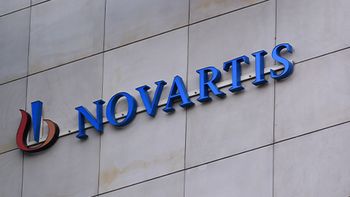
- Pharmaceutical Executive-02-01-2010
- Volume 0
- Issue 0
Assets for Advantage
Innovation won't happen until the industry is ready to sit down and make a big change.
This month's edition of Pharm Exec is a celebration of two little-noticed themes that characterize today's life sciences industry: diversity and promise. We include a healthy dose of the "change management" serum that is creating a more individualistic, nuanced style of leadership behavior in the "c suite." We also present a more quantitative analysis of how changes in the payer base are speeding the industry's transition to a customized business model for drug promotion. Wrapping it up is a feature that upholds a much older premise: strong science and allowance for serendipity plant the seeds for future commercial success.
William Looney
Walter Armstrong's profile of Shire and its CEO Angus Russell marks an expansion of our effort to cast more light on "stealth pharma" —smaller companies that celebrate idiosyncrasy as a virtue, and where a gut reaction against the perceived excesses of Big Pharma is at the root of the business culture. Russell is explicit in warning that any move by the pharma majors to capture the company will lead to the devaluation of its best asset—people. Bromide or not, Russell is one of the rare CEO's who seem to be able to embrace change as something normal rather than an excuse for endless restructuring shaped by consultants.
Shire is thus worth watching for its simple strategic focus, which also has the virtue of being intensively patient-friendly. Will being the preeminent specialty niche player—spinning big profits from small orphan drugs that find a passionate audience among patients—help position the company for a future in the major leagues?
Our second feature is Pharm Exec's annual exclusive on the latest findings from the Hay Group's survey on Sales Force Effectiveness, now in its 19th year. The survey data portray an industry struggling to find new ways to prove the value of its products to a different class of flesh and blood customers. The real news is not that the absolute number of reps is declining; instead, the trend is toward a reorientation in the preferred background and skills that a rep brings to the job. Now that the payer is driving product choices, the survey holds that P&R specialists will soon replace the traditional physician-oriented detailer as first line of contact with customers. The implications for the latter are starkly self-evident—if you can't speak the payer's language, look for alternative employment.
This month we also present our fourth annual choice for drug Brand of the Year. Here, the therapeutic template is cancer—a killer disease that introduced itself to 1.5 million Americans last year—and our drug of choice, Avastin, celebrates one of medical science's few early breakthroughs in understanding the biology of tumor growth. The drug is not perfect, and its cost is high, but the broader impact on science has been as prolific as cell division itself, triggering a "compete to innovate" cycle within industry and academia that may lead eventually to a re-classification of cancer from consistent killer to persistent, chronic disease.
Readers should see in this arrangement of features our view of what constitutes the core tactical elements of business success—consistency in management, linked to a simple, well-communicated vision of progress; initiative, as exemplified by the timely retooling of a traditional line function, so that it is "fit for purpose" in meeting new customer expectations; and passion in leveraging the industry's vast resources of human talent to address unmet medical needs. Wherever it takes you, this is an exciting time to be in the field of medical discovery.
We look forward to your comments.
WilliamLooney
Editor-in-chief
Articles in this issue
almost 16 years ago
Pharmaceutical Executive Digital Edition - February 2010almost 16 years ago
A Sturdy Frameworkalmost 16 years ago
Vaccines and Valuealmost 16 years ago
Tearing Up the Rule BookNewsletter
Lead with insight with the Pharmaceutical Executive newsletter, featuring strategic analysis, leadership trends, and market intelligence for biopharma decision-makers.




